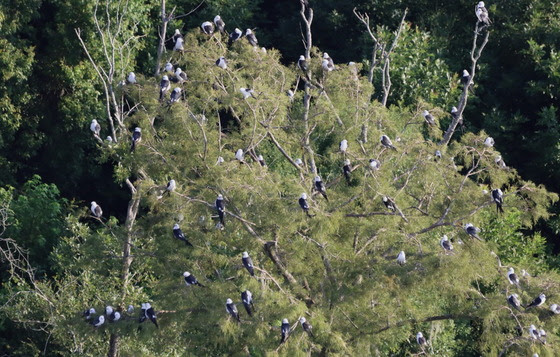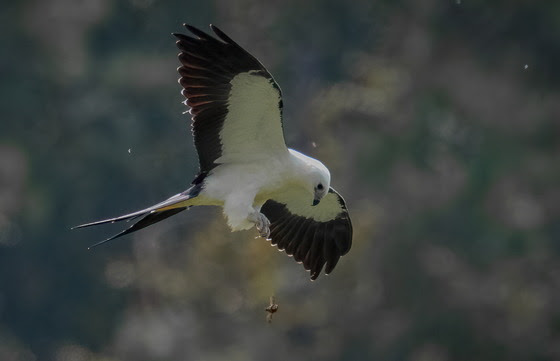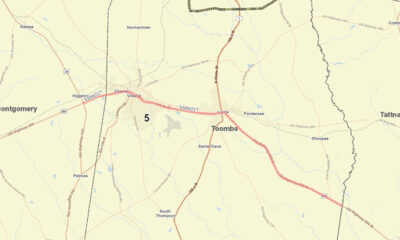
According to the Georgia Department of Natural Resources Wildlife Division, a record setting swallow-tailed kite roost was found last month on the Altamaha river near Glennville by wildlife technician, Andy Day. Wildlife biologist Tim Keyes then visited the roost by boat. It’s not clear how long it has been there, but the finding is the largest swallow-tail roost documented in Georgia.
From their graceful, swivel-tailed flights to vivid black-and-white markings, swallow-tailed kites are must-see raptors. Which makes the recent discovery of the largest swallowtail roost documented in Georgia even more eye-catching.
Following up on a satellite-tagged kite, DNR wildlife technician Andy Day found the roost in early August along the Altamaha River south of Glennville. A count by helicopter totaled 612 kites.
Wildlife biologist Tim Keyes first visited the roost by boat. “It was like swirling kettles of kites,” he said.
Each year about 150-200 pairs of swallow-tailed kites nest in Georgia. Most of these birds, a species of conservation concern in the State Wildlife Action Plan, nest on the lower stretches of the Satilla and Altamaha rivers. Some nests are scattered along other south Georgia rivers.
After nesting and before the kites migrate to South America, in late summer the birds gather in roosts at night and feed by day on insects over fields and other open areas. In southeast Georgia, the foraging can involve large groups. The Altamaha roost, which is on private land in tall trees along drainages and the river, feeds “some of those big foraging aggregations that people like to see,” Keyes said.
It’s unknown if the roost is primarily made up of kites that nested in Georgia and South Carolina, or if it includes numerous kites from Florida. During the post-breeding season, some swallowtails fly north for a brief time before migrating south. Nocturnal roosts in Florida can number more than 2,000 kites.
Nor is it clear how long the roost has been there. Gathering sites can shift, Keyes said. “This was a river stretch where we’ve had clusters of roosting kites before.”
What is clear is that as of early August the roost had more swallow-tailed kites in one place than all of the kites counted in an entire day of aerial roost surveys on the Savannah, Ogeechee, Altamaha and Satilla.
“Even combining the river systems,” Keyes said of those late-July surveys from 2009-2011, “we never had 600-plus birds total. Our highest one-day count across all the rivers was under 500 birds.”
“Wild Fact” about swallow-tailed kites from Ethan Hatchett: “Swallow-tailed kites in the U.S. migrate from the Southeast to South America each fall. But the journey requires preparation. From late July into August, areas buzzing with insects – such as pastures and newly mown hayfields in south Georgia – can draw flocks or aggregations of swallow-tailed kites, sometimes 50 or more and often including Mississippi kites. The aerobatic black-and-white swallowtails spend mornings filling up on June beetles (often called June bugs), dragonflies and other insects, most caught and eaten in flight, before winging it south for the winter.”


Crime & Safety
GBI Arrests Metter Youth Pastor for Child Exploitation

Chattooga Public Safety
Rome Pediatrician Concerned about Measles in U.S.

Bulloch Public Safety
04/30/2024 Booking Report for Bulloch County

Bulloch Public Safety
04/09/2024 Booking Report for Bulloch County

Bulloch Public Safety
04/01/2024 Booking Report for Bulloch County

Bulloch Public Safety
04/08/2024 Booking Report for Bulloch County

Bulloch Public Safety
04/22/2024 Booking Report for Bulloch County

Bulloch Public Safety
04/15/2024 Booking Report for Bulloch County










